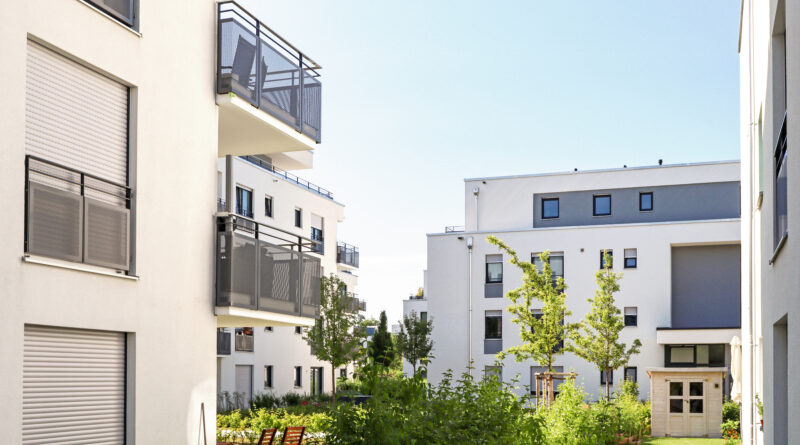Addressing the Needs of the People
Affordable housing development to bring energy efficiency and greenery to Harlem
By Louis Koehl
For nearly five decades, the East Harlem block west of Park Avenue between 111th and 112th Streets sat vacant. The vast parcel, originally cleared for public housing construction, was gradually claimed by area residents, whose hobby gardens and casitas turned the block into an oasis of green in the bustling low-income neighborhood. Vexingly, the site’s transformation into a de facto public space became a major stumbling block to doing anything else with it: why, neighbors and local political figures had to ask, would they sacrifice a well-loved piece of informal parkland, even for the sake of putting affordable housing in its place?
Now, after years of waiting, the answer to that question is finally here, thanks to affordable housing developers Jonathan Rose Companies, L+M Development and Acacia Network, in collaboration with New York-based Handel Architects. Presently under construction and due for its phase-one debut this month, Sendero Verde will contain 709 affordable units as well as community amenities, retail storefronts, a school and more. The designers and their clients cut through the conundrum that’s held up development with a simple, ecologically-inspired concept: instead of asking Harlemites to choose between greenspace and housing, the project team was determined to give them both.
The design began with a clever inversion of the midcentury, tower-in-a-park model commonly seen in public housing. Following the path of a pre-modern trail that once traversed the area, Sendero Verde is arranged around a meandering path, weaving easterly through the site from Park Avenue to Madison. The massing of the large, 35-story structure is broken down into three separate volumes framing the central pathway, creating a lushly-planted courtyard replete with seating areas, lighting, lawns for lounging and trees for shade.
Spilling out onto different levels, this park-in-a-tower also features bays and niches where residents and members of the community can maintain shared gardens; the entire landscape, in fact, is open to the public, making it a more than adequate substitute for the urban, open space it’s set to replace.
Having lived up to the promise of the project’s title (meaning “green path” in Spanish), the designers then went a step further, infusing the whole complex with the eco-friendly spirit of its striking outdoor feature. As the largest fully-affordable Passive House-certified housing development in the world, Sendero Verde is a model of energy-efficient design.
From its airtight, carefully insulated envelope—allowing it to retain heat up to twenty-four times longer than conventional New York apartment buildings—to its highly-efficient HVAC system—consuming as much as 60% less than comparable structures—to its high-capacity onsite water-runoff retention—an invaluable asset in the storm-prone city—the complex was designed to meet the highest green standards and exceed them.
At every turn the ownership groups, design team, contractors and consultants worked to find ways to tweak and enhance conventional construction techniques, pushing constantly towards greater performance. The team’s dedication to building green was actually key to securing the project in the first place, winning the contract in a competition sponsored by SustainNYC, a municipal initiative to create affordable housing for New Yorkers that also addresses the pressing need to reduce the city’s carbon footprint.
Beyond just plant life and low power consumption, Sendero Verde gives back to its residents and to Harlem at large with something a little more abstract; an essential quality that can only be called a sense of communal thriving. Termed by Jonathan Rose Companies a “Community of Opportunity,” the project is replete with features large and small that put an accent on civic identity and mental and physical wellness: ground-floor programing includes the Union Settlement, one of the oldest public-service organization in New York, as well as an art gallery run by development partner the Acacia Network and educational facilities operated by the Harlem Children’s Zone.
Thanks to the building’s MERV 13 air filters and sound-proof, triple-glazed windows, residents breathe fresher air and sleep better at night. Not just ecologically sustainable, the project is designed to be socially sustainable as well, an activating force for positive change in the surrounding neighborhood and a true “green path” for New York’s future. With apartments affordable for a wide spectrum of low- and middle-income residents, Sendero Verde preserves East Harlem’s diverse cultural character while giving it room to grow—allowing the community to put out new leaves and shoots, but still remain rooted in its rich old soil.
 Louis Koehl AIA, CPHD, is Senior Associate and Director of Sustainable Design at Handel Architects.
Louis Koehl AIA, CPHD, is Senior Associate and Director of Sustainable Design at Handel Architects.

